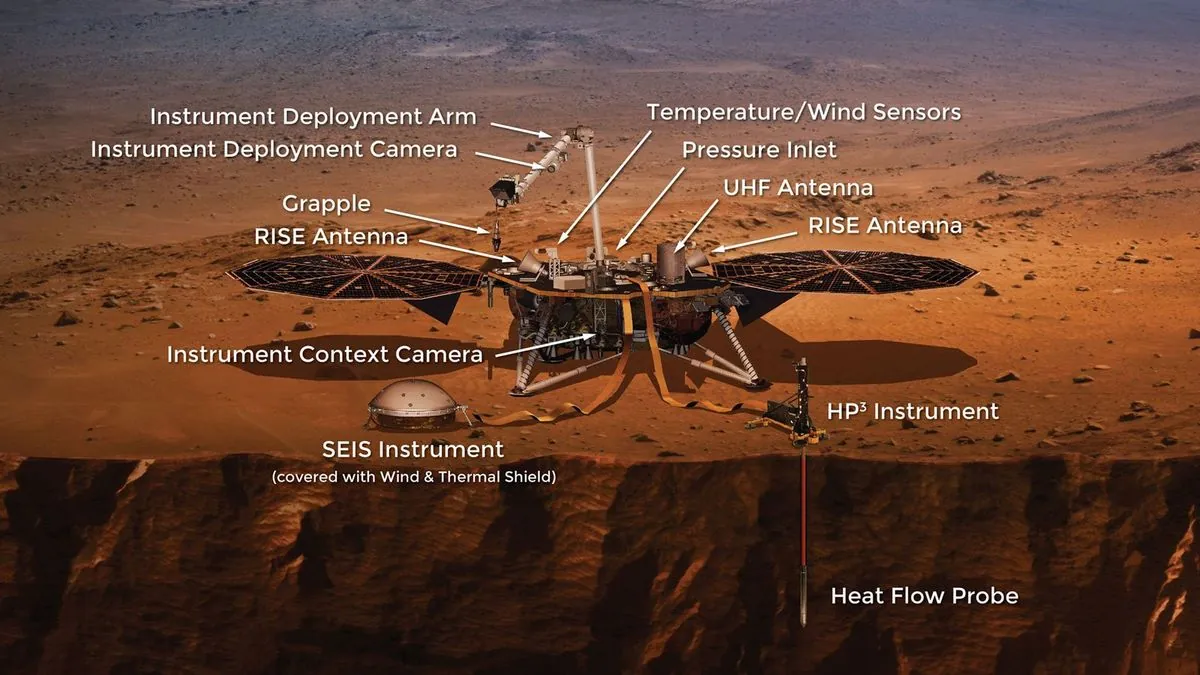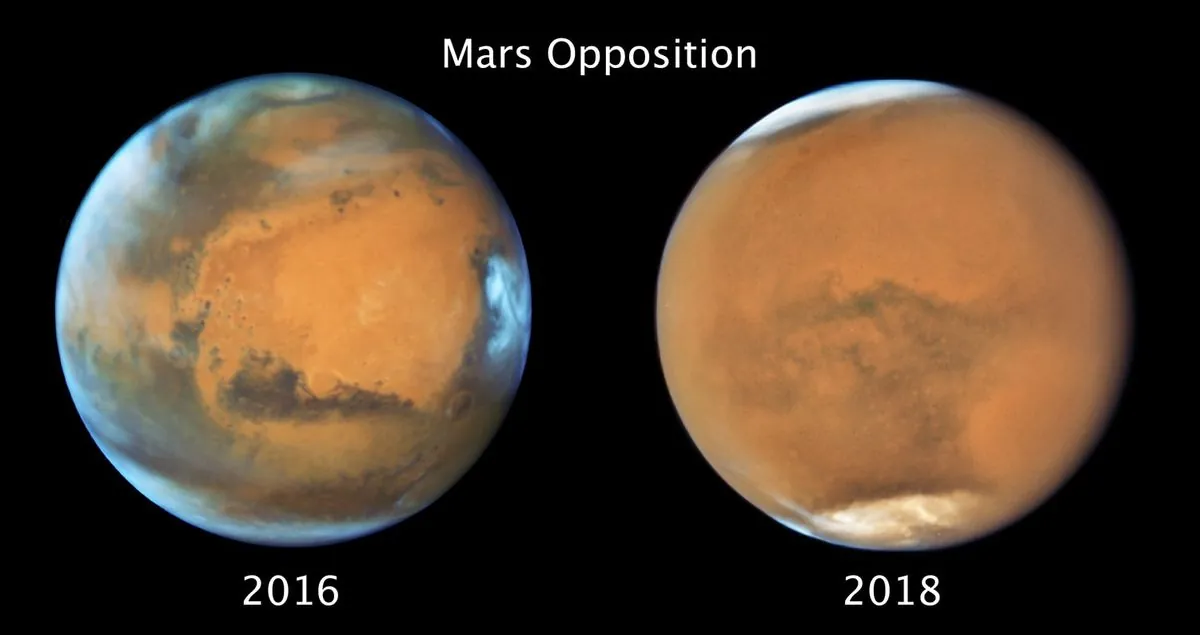Mars InSight Study Unveils Deep Liquid Water, Boosting Life Search
NASA's Mars InSight lander data reveals liquid water deep beneath the surface, advancing the search for life and offering insights into the planet's ancient oceans. The study suggests vast underground reservoirs.

A groundbreaking study utilizing data from NASA's Mars InSight lander has uncovered compelling evidence of liquid water deep beneath the Martian surface. This discovery, published on August 12, 2024, in the Proceedings of the National Academy of Sciences, marks a significant advancement in the ongoing search for life on the Red Planet and provides new insights into the fate of Mars' ancient oceans.
The Mars InSight lander, which has been operational on Mars since November 2018, collected seismic data over a four-year period. By analyzing how Martian quakes propagated through the planet's subsurface, researchers were able to infer the presence of materials and substances beneath the surface.
The study's findings suggest that liquid water is likely present at depths between 11.5 and 20 kilometers beneath the lander. This discovery is particularly intriguing as water is considered a crucial ingredient for life as we know it. Vashan Wright, one of the study's authors from the University of California San Diego's Scripps Institution of Oceanography, drew parallels with Earth's subsurface conditions, stating:
"On Earth what we know is where it is wet enough and there are enough sources of energy, there is microbial life very deep in Earth's subsurface. The ingredients for life as we know it exist in the Martian subsurface if these interpretations are correct."
The volume of liquid water predicted by the study is substantial, potentially exceeding the water volumes proposed to have filled hypothesized ancient Martian oceans. This finding adds a new dimension to our understanding of Mars' water cycle and the fate of its surface water, which existed in the form of lakes, rivers, and oceans over 3 billion years ago.

Mars, the fourth planet from the Sun, has long captivated scientists and the public alike. Its reddish appearance, caused by iron oxide on its surface, has earned it the nickname "Red Planet." The planet's unique features, including the largest volcano (Olympus Mons) and canyon system (Valles Marineris) in the solar system, have made it a prime target for exploration.
The study's implications extend beyond the search for life. It provides valuable insights for future Mars missions, particularly in terms of in situ resource utilization. As humans continue to push the boundaries of space exploration, the potential presence of accessible water on Mars could prove crucial for sustaining long-term missions or even future colonization efforts.
Michael Manga of the University of California Berkeley and Matthias Morzfeld of the Scripps Institution of Oceanography also contributed to this groundbreaking research. Their collective efforts demonstrate the power of international collaboration in advancing our understanding of the cosmos.
As we reflect on this discovery, it's worth noting that Mars, despite its harsh conditions, continues to surprise us. With temperatures ranging from -140°C at the poles to 20°C at the equator during midday, and a thin atmosphere primarily composed of carbon dioxide, Mars presents a challenging environment. Yet, the potential presence of liquid water deep beneath its surface offers a glimmer of hope in the search for extraterrestrial life.
This study serves as a testament to human ingenuity and perseverance in the face of cosmic mysteries. As Wright eloquently put it:
"I'm inspired and I hope the public is also inspired. Humans can work together to put instruments on a planet… and try to understand what's going on there."
As we continue to unravel the secrets of our planetary neighbor, each discovery brings us one step closer to understanding our place in the universe and the potential for life beyond Earth.


































